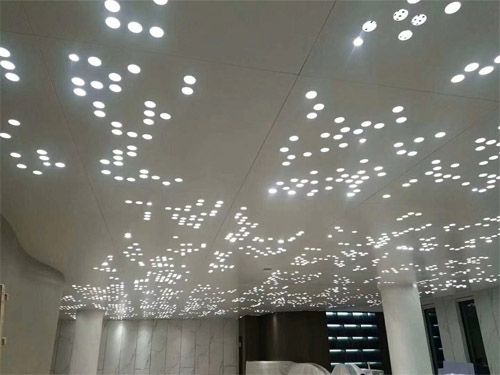

 Frequently asked questions
Frequently asked questions
Abstract: This article will elaborate on the surface treatment methods of aluminum veneer from four aspects, including anodizing, spraying, electrophoretic coating, and powder coating. By introducing and analyzing each method, readers can better understand the surface treatment technology of aluminum veneer.
1. Anodizing is a commonly used surface treatment method for aluminum veneer. By immersing aluminum in an acidic electrolyte and utilizing the principle of anodizing, a dense oxide film is formed on the surface of the aluminum. This oxide film not only increases the corrosion resistance and hardness of aluminum veneer, but also provides a wide range of color options.
2. The advantages of anodizing are simple process, low cost, and the ability to maintain the metallic texture of aluminum veneer. However, the color options for anodizing are relatively limited, making it impossible to achieve complex patterns and textures.
3. Research shows that anodized aluminum veneer has good weather resistance and pollution resistance, making it suitable for outdoor construction and decoration fields.
1. Spraying is a common surface treatment method for aluminum veneer. By using a spray gun to evenly spray the coating onto the surface of the aluminum veneer, a protective film is formed. Spraying can achieve a variety of colors and effects, including metallic texture, wood grain texture, etc.
2. The advantage of spraying is that it offers a wide range of color choices and can meet the needs of different customers. In addition, spraying can also achieve personalized design, giving aluminum veneer a unique appearance.
3. However, the weather resistance and pollution resistance of spray coating are relatively poor, requiring regular maintenance and cleaning. Meanwhile, the volatile organic compounds (VOCs) generated during the spraying process also have a certain impact on the environment and human health.
1. Electrophoretic coating is an efficient and environmentally friendly surface treatment method for aluminum veneer. It uses the action of an electric field to evenly adhere the coating to the surface of aluminum veneer, forming a uniform and dense coating. Electrophoretic coating has good weather resistance and corrosion resistance.
2. The advantages of electrophoretic coating are uniform coating, strong adhesion, and the ability to achieve high surface quality and consistency. In addition, the electrophoretic coating process does not produce VOCs and is environmentally friendly.
3. However, there are relatively few color options for electrophoretic coating, making it difficult to achieve special textures and effects. At the same time, electrophoretic coating equipment and process requirements are high, and the cost is relatively high.
1. Powder coating is a commonly used surface treatment method for aluminum veneer. By electrostatically adsorbing powder coating onto the surface of aluminum veneer, and then baking and curing to form a coating. Powder coating can achieve rich colors and effects, with good weather resistance and corrosion resistance.
2. The advantage of powder coating is that it offers a wide range of color options to meet different needs. Meanwhile, powder coating has high weather resistance and pollution resistance, making it suitable for outdoor environments.
3. However, the coating thickness of powder coating is relatively large, which may affect the details and texture of aluminum veneer. In addition, the disposal of waste generated during the powder coating process also needs to pay attention to environmental issues.
Through the introduction in this article, we have learned that the surface treatment methods for aluminum veneer mainly include anodizing, spraying, electrophoretic coating, and powder coating. Each method has its unique advantages and scope of application. When choosing the surface treatment method for aluminum veneer, it is necessary to consider the specific requirements and environmental conditions comprehensively.
The second paragraph of the article summary content